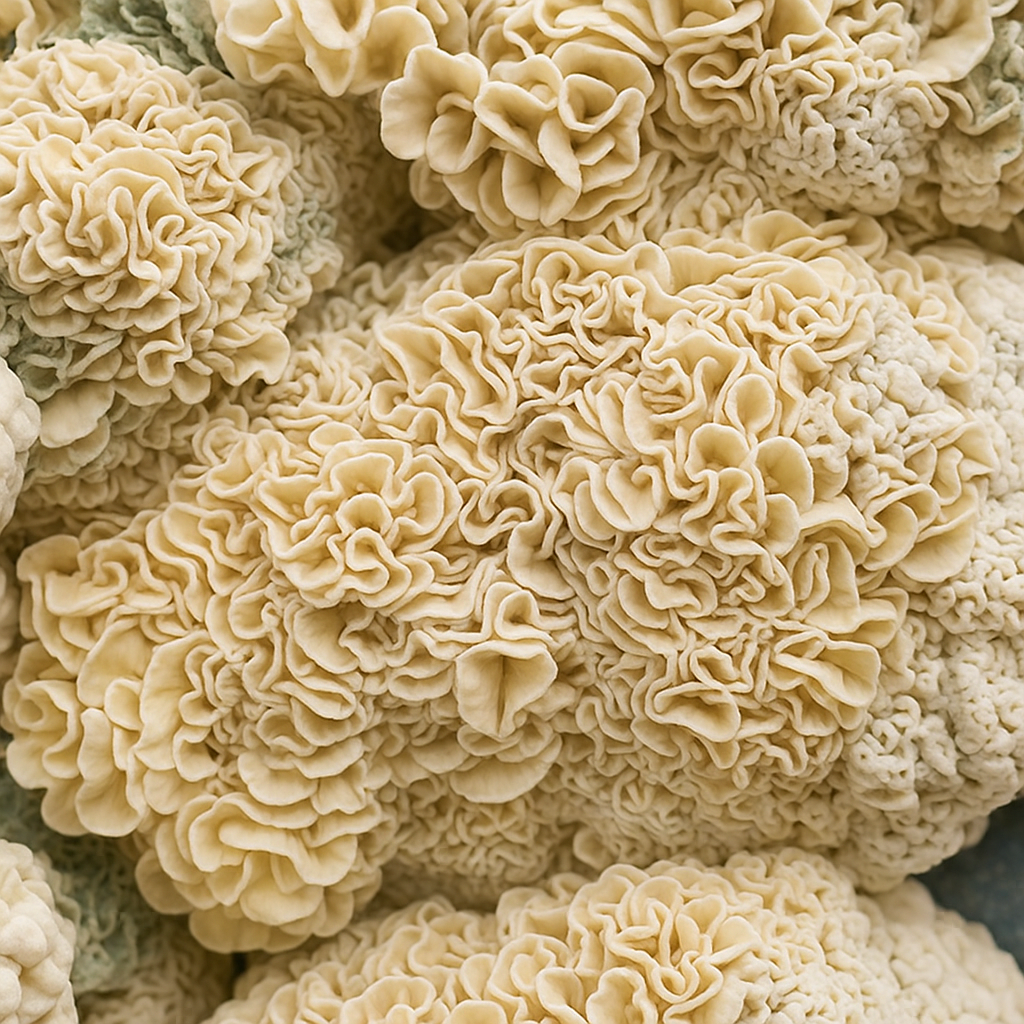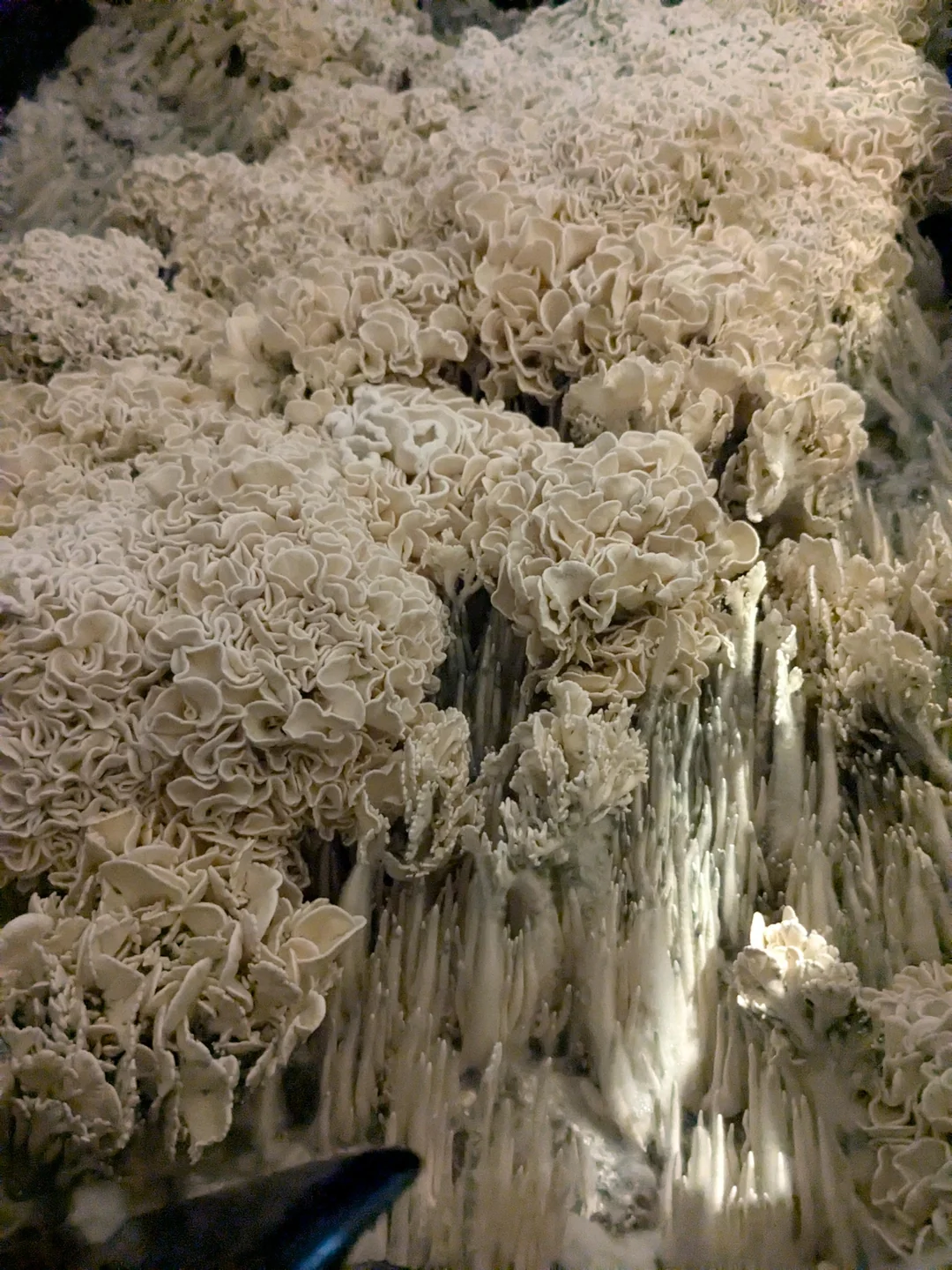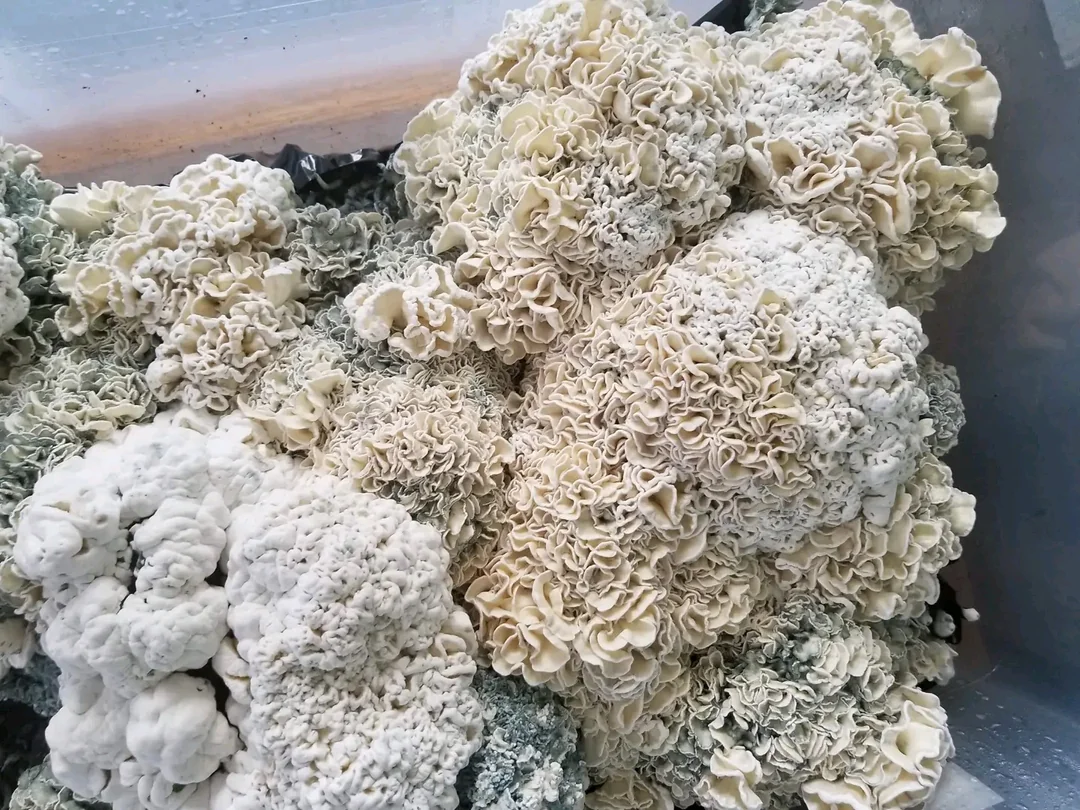Enigma, the mysterious and unique Psilocybe fungus
As its name suggests, Enigma is a rarity within the world of psilocybin mushrooms. It is not a conventional variety of Psilocybe cubensis, but rather a sterile mutation whose reproduction does not occur naturally.
Its unusual morphology —without cap or stem, with a dense texture and "brain-like" appearance—, along with its remarkable psychoactive potency, has sparked growing interest among experienced cultivators, mycologists, and psychedelic enthusiasts.
In this article, we explore what is known —and what is speculated— about the Enigma magic mushroom: its possible origin, morphological appearance, cultivation conditions observed by the community, chemical profile, and its place in the current landscape of psychedelic mycology.

🧬 Uncertain origin and sterile nature of Enigma
Enigma is not the result of a natural evolutionary process, but rather the outcome of a mutation that emerged under controlled cultivation conditions. It cannot be considered a "strain" in the strict sense, as it lacks a stable genetic lineage and does not reproduce through spores. Instead, it is described as a mutant morphology: an anomalous growth form possibly linked to the Tidal Wave Ape variety, a cross between B+ and Penis Envy, although its exact origin remains unconfirmed.
The mutation was detected by cultivators who observed atypical behavior during fruiting: instead of forming caps and stems, the mycelium developed a dense, compact mass without reproductive structures. Its unusual appearance caught the attention of online mycological communities like Shroomery or Reddit, where it began to be known under the name Enigma.
Since it doesn't produce spores, Enigma can only be propagated through mycelial tissue cloning from existing cultures. Its survival depends entirely on human intervention, making it a unique case within psilocybin mushroom cultivation. This artificial origin marks a turning point between traditional mycology and home biotechnology: Enigma is not born, it replicates. Its existence raises questions about the boundaries between the spontaneous and the designed, the natural and the manufactured.
🧠 Atypical morphology and aesthetic fascination
Enigma completely defies the classic image of a mushroom. It lacks cap, stem, gills, or ring. Instead, it develops a dense, amorphous, and lobulated structure reminiscent of a brain, sea sponge, or organic sculpture. Its intertwined texture forms irregular and chaotic folds, with tones ranging from pale white to cream and grayish blue.
Instead of forming differentiated fruiting bodies, as occurs in most Psilocybe cubensis, Enigma generates a compact mycelial mass, sometimes described as superficial sclerotia. These structures —nutrient reserves that usually remain underground— emerge here in view, creating unusual forms, as if the mycelium had decided to model itself on the substrate surface.

This radically different growth pattern has contributed to its popularity in specialized forums and social networks, where its image generates amazement, fascination, or even discomfort. For some, it resembles an alien entity; for others, a piece of fungal art. Its extreme morphology, combined with its reputation as one of the most potent varieties and its exclusively clonal reproduction, has made Enigma a contemporary mycological icon. It's no coincidence that media like DoubleBlind or Tripsitter describe it as "a mushroom that defies conventions." In the current psychedelic imaginary, where the liminal and unusual awaken special interest, Enigma embodies the frontier between the natural and the manufactured, between the possible and the improbable.
🌱 Demanding cultivation and clonal reproduction
Cultivating Enigma presents uncommon challenges even for experienced growers. Being a sterile variety, it does not produce spores and can only be reproduced through mycelial cloning, that is, through the transfer of living tissue to a sterile medium that preserves its genetic line. This means that each cultivation depends on a continuous chain of clonal propagation from the original specimen.
Those wishing to work with this variety must obtain active cultures on Petri dishes, liquid cultures, or mycelial syringes, which greatly limits its availability compared to more standardized and easily distributed strains.
In addition to its limited accessibility, the Enigma magic mushroom demands precise environmental management. Its growth is slow and can be sensitive to minimal variations. According to Reggie Harris, co-founder of Hyphae Labs, and other experienced cultivators, optimal conditions include:
- Colonization: between 24°C and 27°C.
- Fruiting: between 21°C and 24°C.
- Humidity: between 95% and 100% in early phases.
- Recommended substrates: coco fiber, vermiculite, gypsum, and well-aerated, nutrient-rich mixtures.
The complete development cycle can extend about four weeks longer than that of conventional P. cubensis, demanding greater patience, precision, and constant monitoring.
Despite its complexity, Enigma has established itself as a milestone among the most dedicated cultivators. Its rarity, yield, and psychoactive profile have made it a coveted gem for advanced cultivators of psychedelic mushrooms and genetics enthusiasts.

⚗️ Psychoactive potency and enigmatic variability
One of the factors that has cemented Enigma's almost mythical status is its extraordinary psychoactive potency. While any statement about mushroom effects should be approached with caution —psilocybin concentration can vary depending on cultivation, genetics, drying, or storage— laboratory analyses place Enigma among the most potent known expressions of Psilocybe cubensis.
The most reliable measurements come from the Psilocybin Cup, a community event organized by Hyphae Labs, where samples are analyzed through standardized chemical tests. In the fall 2022 edition, several Enigma samples surprised with their unusually high psilocybin levels:
- Enigma Tony: 8.4 mg of psilocybin per gram dry.
- Enigma Beast: 9.3 mg/g, one of the highest records to date.
- Enigma Reversed: only 1.8 mg/g, evidencing great variability between subclones.
For comparison, most commercial P. cubensis strains present concentrations between 1.0 and 2.5 mg/g. Even varieties like Penis Envy, traditionally considered one of the most potent, rarely exceed 7 mg/g. Some Enigma subclones, therefore, sit at the pinnacle of chemical potency within their species.
However, it's worth emphasizing that the amount of psilocybin does not directly predict the depth or quality of the experience. Subjective response to psychedelics is modulated by multiple factors: emotional state, environment, individual sensitivity, or intention. As many experts remind us, dose is not destiny. Additionally, the only reliable way to know the actual potency of a homegrown sample is through laboratory analysis, something most users don't have access to.
🌐 Enigma as a cultural phenomenon
Beyond its biological particularities, Enigma has established itself as a cultural symbol within the contemporary psychedelic universe. Its rarity, potency, and unusual appearance have captured collective imagination, going viral on networks, forums, and specialized media. In spaces like Reddit, Discord, or Shroomery, it generates fascination, skepticism, and debates about its origins, effects, or cultivation. It's not just a genetic anomaly: it's a liminal creature, born from human manipulation but surrounded by an almost mythological aura.
This popularity is not only due to its chemical profile, but to what it represents: mycology as creative act. Enigma embodies a visible transition between recreational mycology and experimental mycology, where mushrooms are no longer just discovered: they are designed. Its figure raises questions about the limits of human intervention, the role of aesthetics in home biotechnology, and the mutable nature of psychedelics in the digital age.
Unlike other varieties of Psilocybe cubensis, Enigma doesn't come from the forest or ancestral tradition. It's a recent phenomenon, gestated in home laboratories and propagated through online fascination. It represents a post-natural mycology, where fungal exploration intertwines with narrative, speculation, and the desire to transgress the boundaries of the known.
Its potency doesn't guarantee clarity or depth. Like any psychedelic, its experience still depends on context, intention, and respect. Enigma is not a shortcut: it's a threshold. An invitation to question not only what a mushroom can be, but also what we seek when we cultivate, consume, or idealize them.
Perhaps Enigma's true mystery doesn't lie in its form, but in what it reveals about us: about our ways of thinking, creating, and intervening in life.
Sources
- https://doubleblindmag.com/enigma-mushroom/
- https://tripsitter.com/magic-mushrooms/strains/enigma/
- https://www.youtube.com/watch?v=ZTFWqlf348E
- https://www.shroomery.org/forums/showflat.php/Number/25427363
- https://www.oaklandhyphae510.com/post/fall-2022-hyphae-cup
- https://www.reddit.com/r/shrooms/comments/dib3qx/enigma_mushroom/




















